The Pros & Cons of Buying an Older Home | Romance vs. Reality

Thinking of buying an older home? Read this first…
“We’ve found a beautiful Victorian home near downtown. All we need to do is replace the kitchen, wraparound porch, heat system and windows… our budget is $700.”
There is the Romantic idea of what it would be like to live in a charming old Craftsman Bungalow on a tree-lined avenue near downtown…
...and then there is the Reality of what it’s like to own and live in one (and it’s not always as charming as HGTV makes it out to be).
Our hope is that this will be a simple guide to help you make the best decision. This article is not designed to steer you in one direction or the other, but rather to give you some practival examples and useful case studies to make an informed decision on your own.
First, let’s look at SOME of the Pros and Cons…
Charm and Craftsmanship
 The statement “They don’t build them like they used to” has never been more true than when it comes to old homes. This can be a mixed bag, as we’ll talk about in a moment, but the level of craftsmanship and care that went into the construction of older homes is incredible - and to think - they did it all without power tools! Beautiful mill work, leaded windows, transoms, picture rail, etc… are all stunning features that are unique to older homes.
The statement “They don’t build them like they used to” has never been more true than when it comes to old homes. This can be a mixed bag, as we’ll talk about in a moment, but the level of craftsmanship and care that went into the construction of older homes is incredible - and to think - they did it all without power tools! Beautiful mill work, leaded windows, transoms, picture rail, etc… are all stunning features that are unique to older homes.
I’ve been in my Craftsman Bungalow for 4 years and I’m still finding cool new features that I hadn’t previously noticed. Nowadays we often hear complaints about the quality of new homes. The reality is that efficiency and cost are often prioritized over craftsmanship and attention to detail nowadays. There are still a lot of amazing home builders out there, but a new home is going to be an altogether different product built with different materials.
Every Home is Unique
 Unlike some new subdivisions that are composed of 5 or 10 different floor plans throughout the entire neighborhood, older homes are generally all going to be unique. Even if they’re an old Sears kit house, they will inevitably have their own special variations. The building process has become much more model-driven over the past few years.
Unlike some new subdivisions that are composed of 5 or 10 different floor plans throughout the entire neighborhood, older homes are generally all going to be unique. Even if they’re an old Sears kit house, they will inevitably have their own special variations. The building process has become much more model-driven over the past few years.
Location
 As a general rule, the oldest homes are built in the most desirable parts of the city. When cities were originally developed, the residents would choose the best areas for their neighborhoods and begin building their communities. As time goes on, new homes are naturally forced out into suburbs and areas that are often less desirable. You’ll also likely be closer to an urban setting with walkability to entertainment and restaurants.
As a general rule, the oldest homes are built in the most desirable parts of the city. When cities were originally developed, the residents would choose the best areas for their neighborhoods and begin building their communities. As time goes on, new homes are naturally forced out into suburbs and areas that are often less desirable. You’ll also likely be closer to an urban setting with walkability to entertainment and restaurants.
Established Neighborhoods
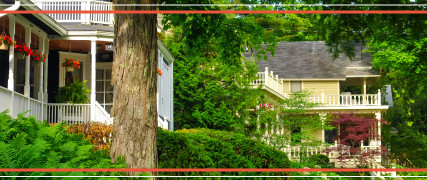 Older homes are often built on larger lots with mature trees and landscaping. It’s also not uncommon for older neighborhoods to have a much stronger sense of community, with more neighborhood gatherings. There is simply no comparison to the feel of an older neighborhood with mature trees, custom mill work, and charming front porches.
Older homes are often built on larger lots with mature trees and landscaping. It’s also not uncommon for older neighborhoods to have a much stronger sense of community, with more neighborhood gatherings. There is simply no comparison to the feel of an older neighborhood with mature trees, custom mill work, and charming front porches.
They Hold Their Value
 In the last housing crisis, many new-build communities were the hardest hit. It’s difficult to find statistics on this specific topic, but in my experience older homes tend to hold their value well and appreciate more consistently over time. The real key is to look at stats in the specific neighborhood you are wanting to buy in and see what development plans there are for the near future.
In the last housing crisis, many new-build communities were the hardest hit. It’s difficult to find statistics on this specific topic, but in my experience older homes tend to hold their value well and appreciate more consistently over time. The real key is to look at stats in the specific neighborhood you are wanting to buy in and see what development plans there are for the near future.
No HOA’s
 Some buyers prefer being in communities with HOA’s, but most buyers aren’t big fans of them. Additionally, over time HOA fees generally are going to increase. It’s extremely rare for an older community to have an HOA. Many older homes are kept up to a high standard because the owners love and take pride in their homes, not because the HOA mandates it. HOA’s do serve a great purpose in new communities, but they can also be a source of real frustration.
Some buyers prefer being in communities with HOA’s, but most buyers aren’t big fans of them. Additionally, over time HOA fees generally are going to increase. It’s extremely rare for an older community to have an HOA. Many older homes are kept up to a high standard because the owners love and take pride in their homes, not because the HOA mandates it. HOA’s do serve a great purpose in new communities, but they can also be a source of real frustration.
Renovations generally have greater ROI
 Bear in mind that renovating an older home is also likely to cost you more than renovating a newer home, but the upside potential is phenomenal. I’ve renovated two older homes in my neighborhood and they’re both worth more than twice what I purchased them for now. It stands to reason that remodeling a 50 year old kitchen is going to help you gain a lot more equity than remodeling a 10 year old kitchen. The “Cost vs. Value” report offers a wealth of data about the cost of and return on various home improvements.
Bear in mind that renovating an older home is also likely to cost you more than renovating a newer home, but the upside potential is phenomenal. I’ve renovated two older homes in my neighborhood and they’re both worth more than twice what I purchased them for now. It stands to reason that remodeling a 50 year old kitchen is going to help you gain a lot more equity than remodeling a 10 year old kitchen. The “Cost vs. Value” report offers a wealth of data about the cost of and return on various home improvements.
Higher Cost to Maintain and Update
 Things like tuck-pointing foundations and re-glazing windows simply aren’t issues with newer homes, but deferred maintenance can quickly lead to some significant expenses in older homes. Keeping up on an older home is going to cost more than a newer home because of the age of the home and the materials it’s made with. It’s a good rule of thumb to budget 1% of your home’s value to annual maintenance. On an older home, I recommend budgeting 1.5%.
Things like tuck-pointing foundations and re-glazing windows simply aren’t issues with newer homes, but deferred maintenance can quickly lead to some significant expenses in older homes. Keeping up on an older home is going to cost more than a newer home because of the age of the home and the materials it’s made with. It’s a good rule of thumb to budget 1% of your home’s value to annual maintenance. On an older home, I recommend budgeting 1.5%.
Functionality Issues
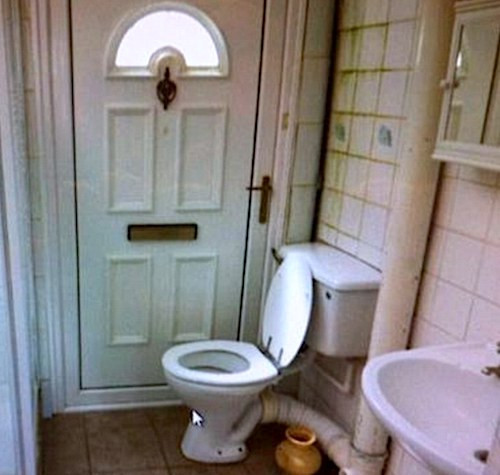 Our lifestyles and our needs have changed a lot over the last 100 years, so older homes usually come with some hurdles with regard to our modern lifestyle. Smaller rooms, tiny closets, choppy layouts, lack of garages, uncomfortable cellars and less square footage are a some of the big complaints you’ll hear about older homes.
Our lifestyles and our needs have changed a lot over the last 100 years, so older homes usually come with some hurdles with regard to our modern lifestyle. Smaller rooms, tiny closets, choppy layouts, lack of garages, uncomfortable cellars and less square footage are a some of the big complaints you’ll hear about older homes.
In my experience, the functionality of the home is one of the most often overlooked issues that buyers regret after they move in. Fixing a functionality issue can be very costly and usually won't raise your home's values like a typical upgrade would.
Make sure that the home will fit your lifestyle or that you have the budget to make the necessary changes.
Construction Materials
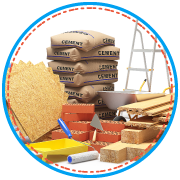 This could really go in the pros or the cons section… Old homes are constructed with some materials that are better. True 2x4 walls that are stronger and can allow for greater insulation, lathe and plaster walls that are more soundproof than modern drywall (although tough on your wifi signal), and old growth wood floors that are more durable.
This could really go in the pros or the cons section… Old homes are constructed with some materials that are better. True 2x4 walls that are stronger and can allow for greater insulation, lathe and plaster walls that are more soundproof than modern drywall (although tough on your wifi signal), and old growth wood floors that are more durable.
However, they’re also built with dated and inefficient systems for heat, electrical, plumbing and insulation.
Efficiency
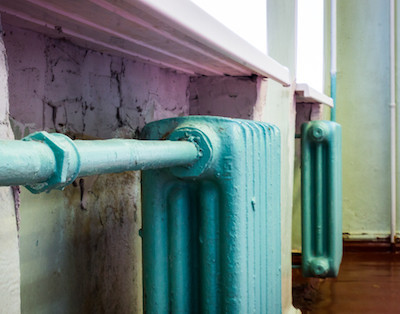 Let’s face it, old homes are drafty. They’re not sealed up as tight as new construction and typically cost more to heat and cool. However, it’s important to keep in mind that old homes were built for efficiency. Long before we had A/C, builders had to be more intentional about how they kept the homes cool. High ceilings, transom windows, large overhangs, window orientation and a host of other things that can often go unnoticed were all very intentional features to help make the home efficient.
Let’s face it, old homes are drafty. They’re not sealed up as tight as new construction and typically cost more to heat and cool. However, it’s important to keep in mind that old homes were built for efficiency. Long before we had A/C, builders had to be more intentional about how they kept the homes cool. High ceilings, transom windows, large overhangs, window orientation and a host of other things that can often go unnoticed were all very intentional features to help make the home efficient.
Also, believe it or not, an old single pane wooden window with a good wooden storm window is usually more energy efficient than a new double pane vinyl window. One other factor to weigh is that if you have to drive a long way to work because you live out in the suburbs, the extra cost to heat and cool your home may very well be offset by the extra cost of gas. Side note- by far the best “bang for your buck” to improve the energy efficiency of your old home is to have the attic properly insulated.

Some specific things to look out for in Old Houses…
Is the house in a historic preservation area?
 If you’re looking to make significant changes to the exterior of the home, you’ll want to know if the home is in a historic preservation area.
If you’re looking to make significant changes to the exterior of the home, you’ll want to know if the home is in a historic preservation area.
If it is, you may be limited to the architectural changes you can make. Be sure to research this first before buying an older home.
Have the major systems in the house been updated?
 Take a look at the plumbing, electrical and HVAC. If the home still has galvanized supply lines, a clay sewer line, knob and tube wiring, gravity furnace or original boiler, you may want to start budgeting for replacing them, depending on their current condition.
Take a look at the plumbing, electrical and HVAC. If the home still has galvanized supply lines, a clay sewer line, knob and tube wiring, gravity furnace or original boiler, you may want to start budgeting for replacing them, depending on their current condition.
Each of these items are costly to replace, and all of them can be easily overlooked if you don’t pay close attention.
Has the foundation and chimney been maintained?
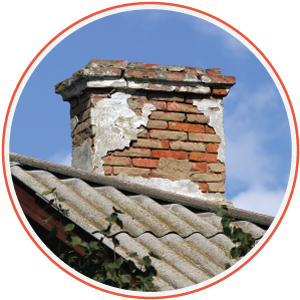 The biggest enemy to the structure of your home is water. Make sure the home has good gutters with downspouts that will keep water away from your foundation.
The biggest enemy to the structure of your home is water. Make sure the home has good gutters with downspouts that will keep water away from your foundation.
Look for areas around the home where the ground slopes towards the foundation and may trap water against it. If the foundation is stone, has it been tuck-pointed in the last 10-20yrs? Are there any cracks in the foundation? Does the chimney have a good weatherproof cap on it?
Are there environmental Issues like Lead Based Paint and Asbestos?
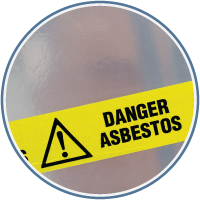 Unless the house has been gutted and remodeled, it’s very likely that it has some lead-based paint in it. Knowing how to protect yourself and your family is very important while you’re living in the home or if you plan on remodeling. The good thing about asbestos is that it is generally easier to identify; there are specific areas of the house that you can look for it - like on siding, duct work, ceiling tiles etc.. There are also different ways that you can encapsulate it to ensure that any potential hazards are minimized.
Unless the house has been gutted and remodeled, it’s very likely that it has some lead-based paint in it. Knowing how to protect yourself and your family is very important while you’re living in the home or if you plan on remodeling. The good thing about asbestos is that it is generally easier to identify; there are specific areas of the house that you can look for it - like on siding, duct work, ceiling tiles etc.. There are also different ways that you can encapsulate it to ensure that any potential hazards are minimized.
Are there still cedar shingles under the asphalt roofing?
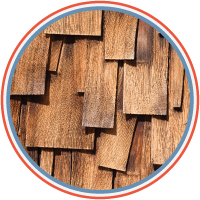 This one gets overlooked often, but it can be very expensive so I had to add it in here. If your roof has newer asphalt composition shingles, you’ll want to check to see if there are cedar shingles underneath. If there are, it’s likely that the next time you have to replace the roof you’ll not only need to remove all layers of roofing but you’ll also have to install a layer of OSB placed on the entire roof to cover the spaced decking that the home was likely built with. This can be a very costly repair so check it out ahead of time.
This one gets overlooked often, but it can be very expensive so I had to add it in here. If your roof has newer asphalt composition shingles, you’ll want to check to see if there are cedar shingles underneath. If there are, it’s likely that the next time you have to replace the roof you’ll not only need to remove all layers of roofing but you’ll also have to install a layer of OSB placed on the entire roof to cover the spaced decking that the home was likely built with. This can be a very costly repair so check it out ahead of time.
So, is a new or old home best?
The answer really depends on you. Taking an honest assessment of what you’re looking for in a home and what your priorities are is really the best way to answer this question. If you’re unsure or on the fence, I typically recommend doing two things;
- DISCUSS this decision with friends and family who know you well and can help give you honest advice and insight. I’ve had many buyers who were initially convinced that an old home was what they wanted, but ultimately purchased a new home (and vice versa).
- SCHEDULE a time with your REALTOR® to look at a few old homes and a few new ones in person. More often than not, being inside of the home and discussing the pros and cons in person will make the decision very clear.
Most Importantly
![]() As a buyer, knowledge is power. In making a purchase of this magnitude, it is of the utmost importance to have the right team on your side that is knowledgable and looking out for your best interests. Make sure you choose a trustworthy REALTOR® and home inspectors who are familiar with older homes and the neighborhoods in the area you are considering.
As a buyer, knowledge is power. In making a purchase of this magnitude, it is of the utmost importance to have the right team on your side that is knowledgable and looking out for your best interests. Make sure you choose a trustworthy REALTOR® and home inspectors who are familiar with older homes and the neighborhoods in the area you are considering.
One last note…
If you think you might be getting in over your head… you’re probably right. If you’re hoping to DIY a remodel on a 100yr old home and you think the projects may be outside of your comfort level, it might be a good time to hit the brakes. Ask just about any contractor who has done a lot of projects on older homes and they’ll almost surely tell you stories about all sorts of crazy issues that arose during a project.
The first two framers I called to give me an estimate to frame a second story on my home turned me down as soon as they realized I was in the old part of town. The last thing you want is for your home to become a constant burden and source of stress in your life.
Why do I love older homes?
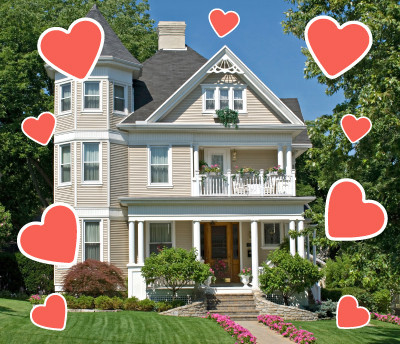 I grew up working for my father’s remodeling company and I was always excited when we got to work on 100yr old homes. The craftsmanship and care that was put into their construction has always amazed me.
I grew up working for my father’s remodeling company and I was always excited when we got to work on 100yr old homes. The craftsmanship and care that was put into their construction has always amazed me.
Now, as a REALTOR®, I love seeing a new generation of buyers enter these older neighborhoods and breathe fresh life into them while appreciating their history.
I also think they’re one of the best investments you can make. As we watch the demographic of buyers shift increasingly to millennials who place a higher priority on strong communities and proximity/walkability/ bike ability to coffee shops and local restaurants etc., we’ve seen just the beginning of what I expect to be a quickly growing demand for homes in these areas.


Hi! I'm Andrew Fortune, the founder of Great Colorado Homes and the creator of this website. I'm also a Realtor in Colorado Springs. Thank you for taking the time to read my blog post. I am always open to suggestions and ideas from our readers. You can find all my contact info here. Let me know if you need a Realtor in Colorado Springs.
Our Most Recent Blog Posts:

Here's a step-by-step guide to take you through the home-selling process.

What happens after you go "under contract" on a home?

Where are the best areas to invest in Colorado Springs?

Here are the 10 most important things to do before listing.

The complete step-by-step guide to buying a home.

Here are the most common fees to expect when buying a home.

